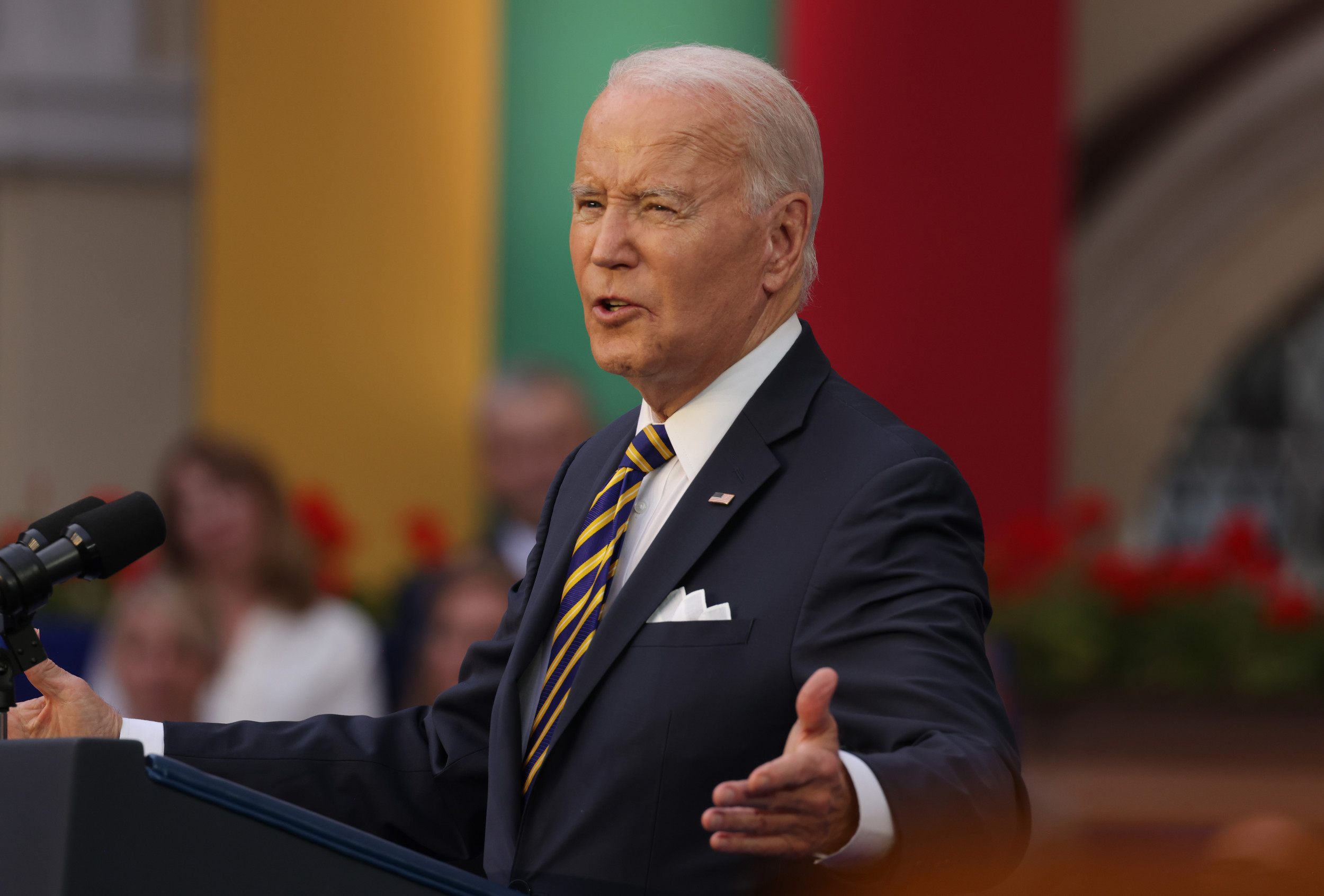Biden’s Speech on NATO

Biden nato speech – President Biden’s speech at the NATO summit in Madrid, Spain, was a powerful and timely reaffirmation of the alliance’s strength and unity. In the face of Russia’s aggression in Ukraine, Biden emphasized the importance of collective defense and the need for NATO to continue to adapt to meet the challenges of the 21st century.
President Biden’s speech at the NATO summit in Madrid emphasized the alliance’s unity in the face of Russian aggression. He reaffirmed NATO’s commitment to collective defense and outlined the steps the alliance will take to strengthen its deterrence and defense capabilities.
Biden’s speech was a clear message that NATO is united and determined to defend its members against any threat.
Main Points of Biden’s Speech
- Biden called on NATO members to increase their defense spending to meet the 2% of GDP target.
- He announced the deployment of additional U.S. troops to Europe.
- He pledged to strengthen NATO’s cyber and space capabilities.
- He emphasized the importance of NATO’s partnerships with non-member countries, such as Ukraine and Georgia.
Significance of Biden’s Speech
Biden’s speech was significant for several reasons. First, it came at a time when NATO is facing its most serious challenge in decades. Russia’s invasion of Ukraine has raised questions about the alliance’s ability to deter and defend against aggression. Biden’s speech sent a clear message that NATO is united and determined to defend its members.
Biden’s recent NATO speech has sparked debate, with some critics questioning his commitment to the alliance. However, in a recent ABC interview , Biden reiterated his support for NATO, emphasizing the importance of collective defense and the transatlantic bond. Despite ongoing concerns, Biden’s speech and subsequent interview suggest a continued commitment to the alliance, albeit with a focus on shared responsibilities and a more equitable distribution of burdens.
Second, Biden’s speech Artikeld a clear vision for NATO’s future. He called for the alliance to invest in new technologies, such as cyber and space capabilities, and to strengthen its partnerships with non-member countries. This vision will help NATO to adapt to the challenges of the 21st century.
Reactions from Other World Leaders, Biden nato speech
Biden’s speech was met with positive reactions from other world leaders. NATO Secretary General Jens Stoltenberg praised Biden’s “strong and clear” message of support for the alliance. German Chancellor Olaf Scholz said that Biden’s speech was a “powerful signal of unity and determination.” French President Emmanuel Macron said that Biden’s speech was a “turning point” for NATO.
NATO’s Response to Russia

NATO responded swiftly to Russia’s invasion of Ukraine, condemning the attack and imposing severe sanctions on Russia. The alliance also deployed additional troops to Eastern Europe and increased its military presence in the region. NATO’s response has been designed to deter further Russian aggression and to support Ukraine’s defense.
Challenges Facing NATO
NATO faces several challenges in deterring further Russian aggression. First, Russia has a significant military advantage over Ukraine, and it is unclear whether NATO is willing to commit to a direct military confrontation with Russia. Second, NATO is a diverse alliance with different interests and priorities, and it can be difficult to reach consensus on a common response to Russia. Third, NATO is facing pressure from some of its members to reduce its involvement in Ukraine, and it is unclear whether the alliance will be able to sustain its current level of support for Ukraine over the long term.
Potential for a Wider Conflict
The potential for a wider conflict between NATO and Russia is real. If Russia were to attack a NATO member state, the alliance would be obligated to respond under Article 5 of the NATO treaty. However, it is unclear how far NATO would be willing to go in a conflict with Russia, and it is possible that a wider conflict could escalate into a nuclear war.
The Future of NATO: Biden Nato Speech
NATO’s future is uncertain in light of the changing global security landscape. The alliance faces a number of challenges, including the rise of China, the resurgence of Russia, and the proliferation of new technologies. However, NATO also has a number of strengths, including its strong membership base, its commitment to collective defense, and its experience in adapting to new challenges.
One of the most important challenges facing NATO is the rise of China. China is rapidly modernizing its military and expanding its influence in the Asia-Pacific region. This has raised concerns among some NATO members, who fear that China could eventually become a threat to the alliance. NATO has responded to China’s rise by increasing its presence in the Asia-Pacific region and by developing new strategies to counter China’s military modernization.
Another challenge facing NATO is the resurgence of Russia. Russia has been increasingly assertive in recent years, annexing Crimea and intervening in the Syrian civil war. This has raised concerns among NATO members, who fear that Russia could eventually pose a threat to the alliance. NATO has responded to Russia’s resurgence by increasing its military presence in Eastern Europe and by developing new strategies to deter Russian aggression.
In addition to these challenges, NATO also faces a number of other challenges, including the proliferation of new technologies. These technologies, such as artificial intelligence and cyber weapons, could potentially be used to attack NATO members. NATO is working to develop new strategies to counter these threats.
NATO’s Response to New Challenges
NATO is responding to these challenges by adapting its strategies and capabilities. The alliance is increasing its military presence in Eastern Europe and the Asia-Pacific region, and it is developing new strategies to counter China’s military modernization and Russia’s resurgence. NATO is also working to develop new technologies to counter the proliferation of new threats.
NATO’s Future
NATO’s future is uncertain, but the alliance is adapting to meet the challenges of the 21st century. NATO remains a strong and cohesive alliance, and it is committed to defending its members against any threat.